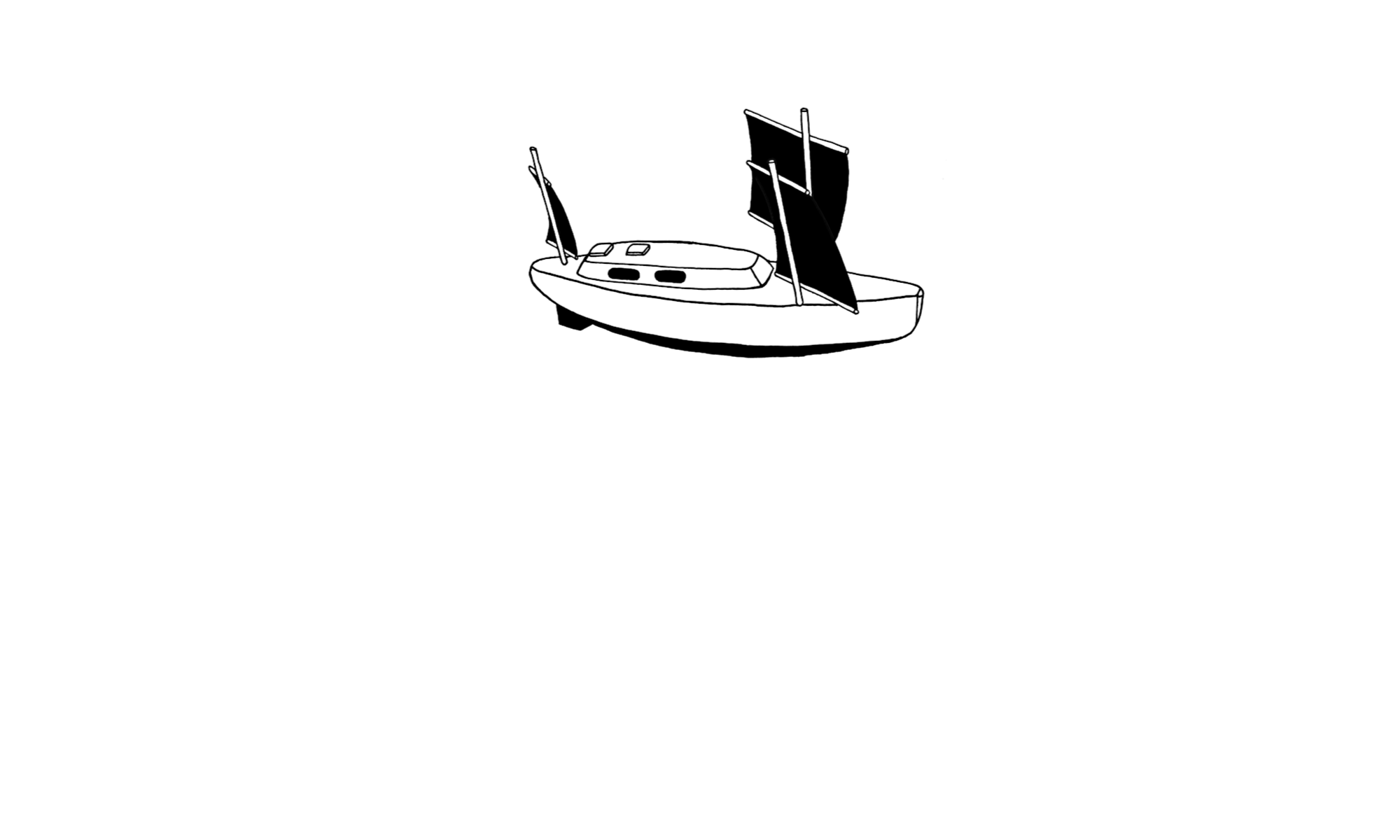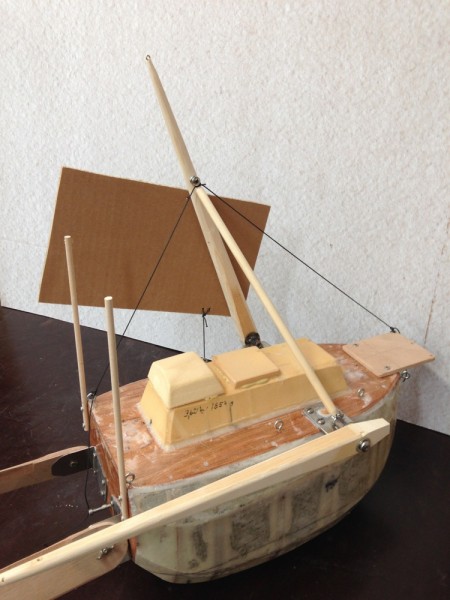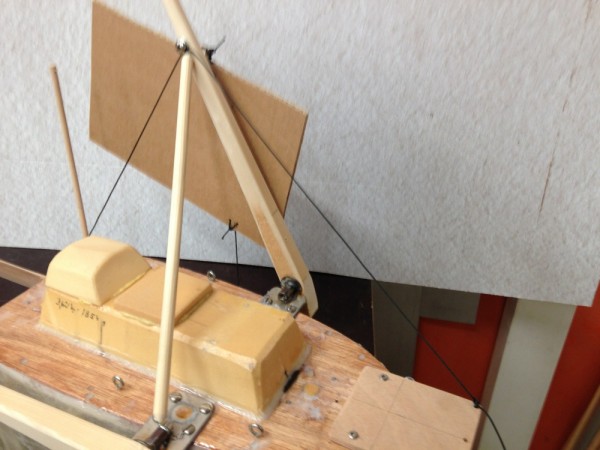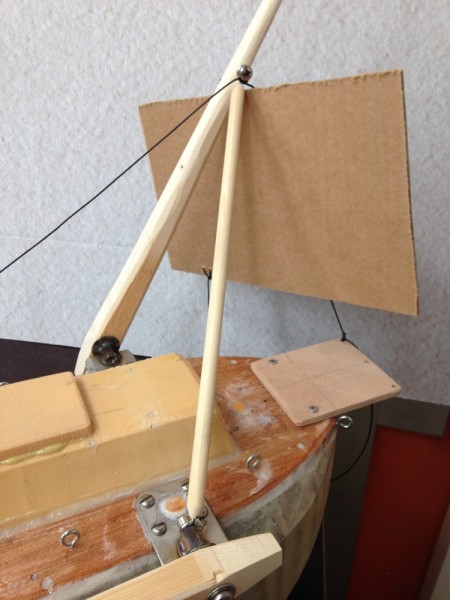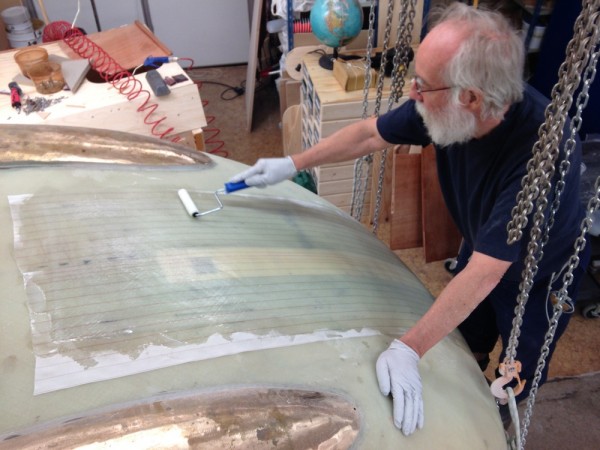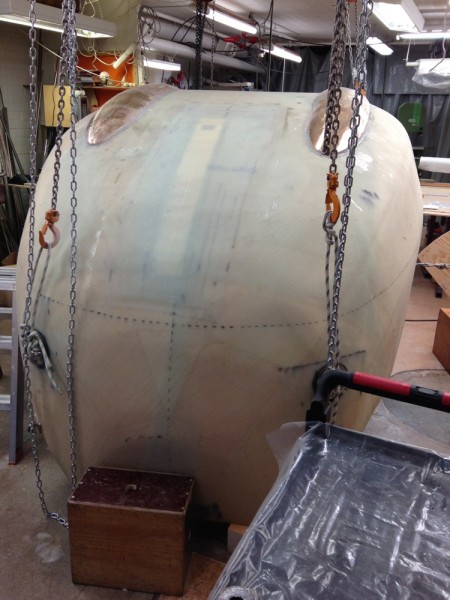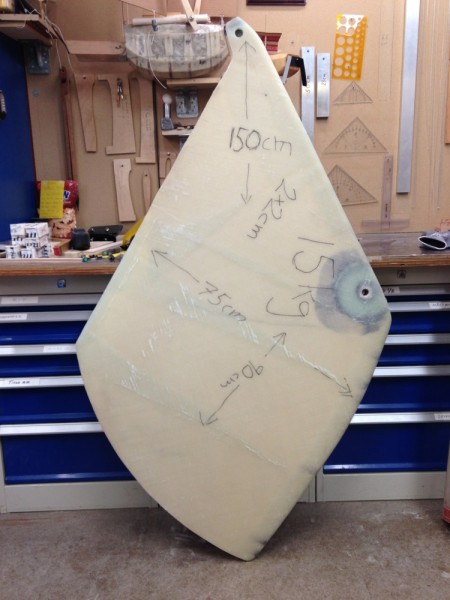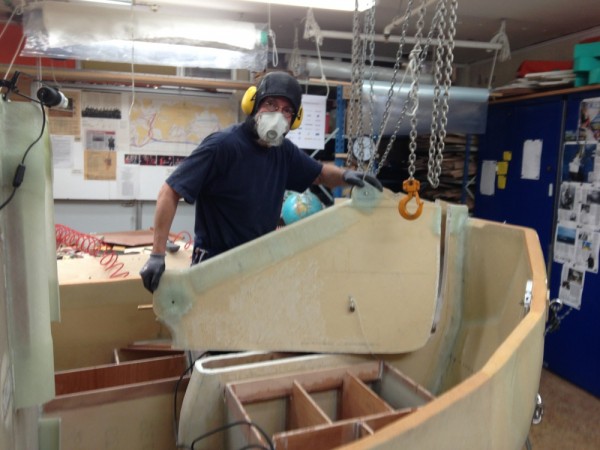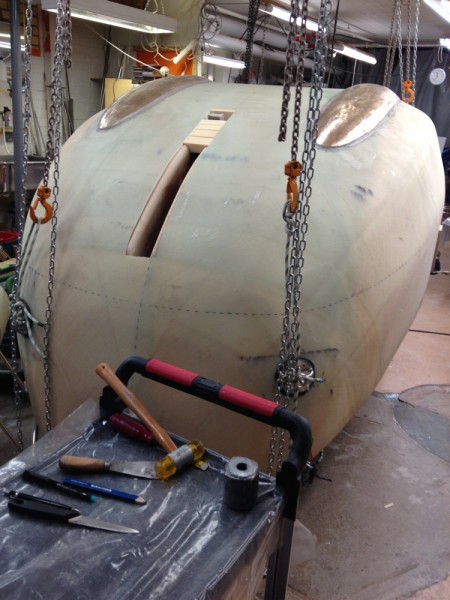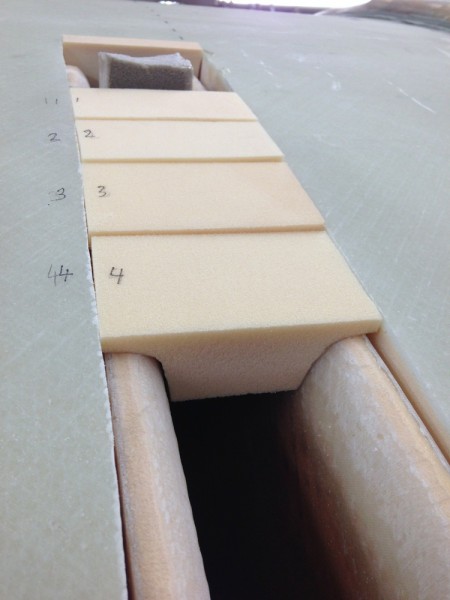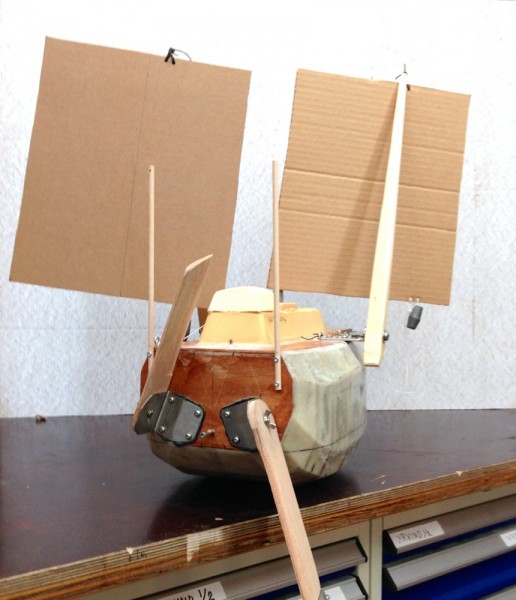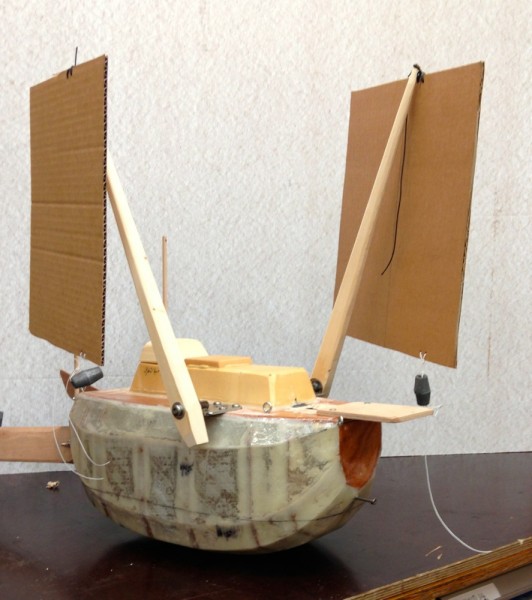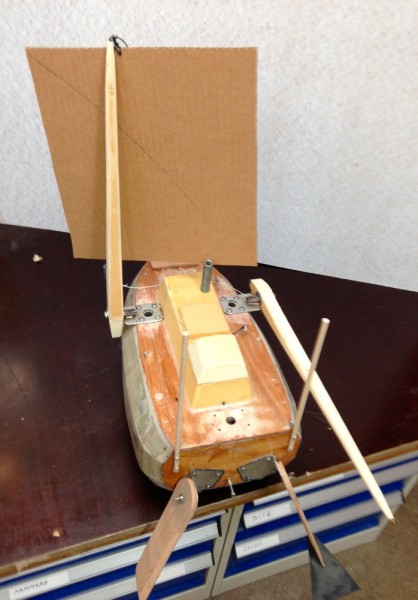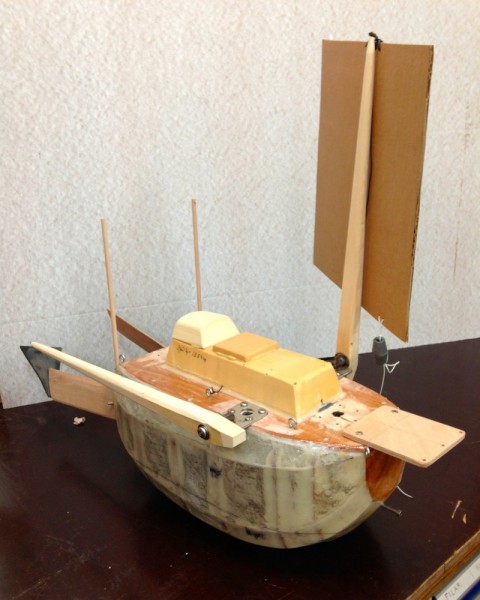Sharpii 2 is still worried about my rig. He beliefs a breaker may rip out the mast and deck fittings and leave a hole in the deck. I disagree. It is not a war zone out there. The waves are not loaded with dynamite. Let me explain:
It is the terrible capsizes and pitchpooles of big boats, like Smeetons 46 feet Tzu Hang and Erling Tambs 47 feet Sandefjord that have filled cruising people with horror. Compared to the above boats, Yrvind Ten and the old Bris are small.
Bris was capsized and pitchpooled near Cape Horn 1974. On a stormy March night 1976 the same boat capsized again, now on Georges Bank, outside Nantucket. On each occasion her 20 feet tall rig came up without a scratch. She had one pair of spreaders and the length of the unsupported column was 10 feet. Yrvind Tens unsupported column is 6 feet. Ten divided by six, squared is 2.777… That is how much stronger the geometry makes that column, according to Euler. The “shroud angle” to the supporting spar is 38 degrees. For Bris the corresponding angle is 13 degrees. The ratio of tangents for those angles is 3.38. The larger the angle, the less is the compression or buckling force. One more thing, the peripheral speed of a mast increases with its length. The length ratio between the two masts is 2.222… The hardness of water increases with the square of the hitting speed. 2.222… squared is 4.94… Now multiply these three numbers 4.94×3.38×2.777 and you get 46.36… The scale effect suggests that if the two masts are built with the same dimensions and materials Yrvind Tens 9 feet mast will be 46 times as resilient than Bris 20 feet mast.
Of course I do not have the faintest ideas of the forces, accelerations, rotational speeds, mass moment of inertia and other factors that are involved in a capsize, neither do Sharpii2, neither do Einstein or Newton. What we know is that shorter columns and larger shroud angles makes rigging stronger and that longer masts whips harder.
On the other hand, I have spent much time in small boats on stormy seas. That has educated me.
-“Is it possible that a breaker may rip out your deck fittings and leave holes”, asks the prudent navigator?
– “Definitely not,” I answer.
My small boat can never be subject to such brutish forces. She has to little mass moment and linear inertia. I know that seamen have been washed overboard from square riggers and other bigger boats. The same breakers have often hit me. That has never caused a problem. The sea is not selective. It hits everything with the same force, the rigging as well as me. If the breakers had the force to rip out my deck fittings they would have killed me long ago.
Sharpii2 says the fittings need to be strong enough to capsize the boat. Of course, that goes without saying. I am not building a toy. I am building a boat for long term, heavy duty cruising. My fittings will be strong enough to lift a boat ten times as heavy. Not only to lift it, but also to resist the dynamic forces necessary to stop a drop. Everything on my boat is solidly anchored. The deck has a sandwich core 3 cm thick. The reinforcements are spread out to a diameter of 30 cm good enough for a pull of 20 or 30 tons. So far my boats has had no problems to stand up against the elements. I see no reason why this boat should be less strong, on the contrary. I am learning all the time.
I will not worry. I will sleep deep and well even during the strongest storms because I know that if a breaker capsize her she will come up proud, happy and smiling.
With Respect and friendship, Yrvind.
